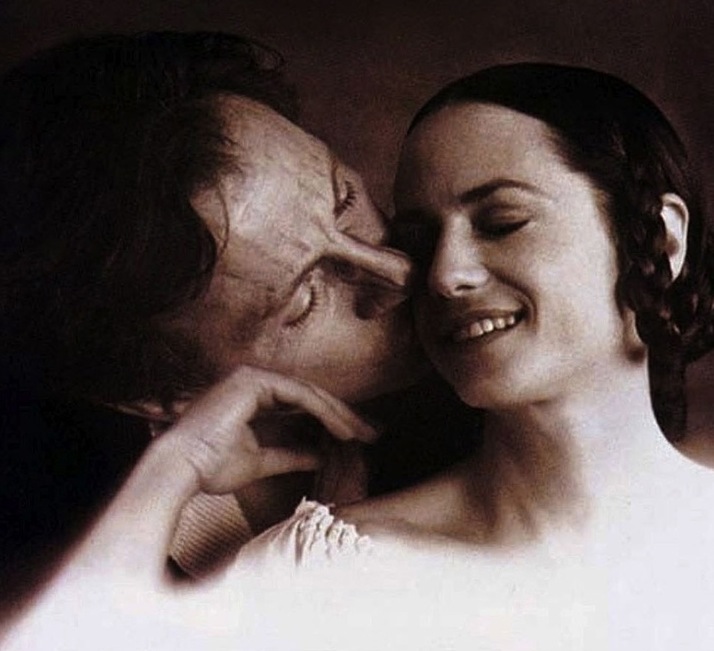Written by Eva Phillips, this is an edited version of an article that originally appeared at Indie Film Minute. It is cross-posted with permission. | Spoilers ahead.
[Trigger warning: discussion of alcoholism, infertility, abuse, and trauma.]
The Girl on the Train functions, in myriad unexpected ways, as a soliloquy. It is a soliloquy for ineffable, unattended loss; an ode, of sorts, for shattered, misplaced desires, for lives ended or redirected. Most compelling, and most devastatingly at times, the film — directed by The Help’s Tate Taylor — is an unflinching soliloquy for broken women. I have a fair amount of hesitation even considering employing the term “broken women,” let alone assessing a film or any text as a soliloquy for them. So much is insinuated on a personal, social, and even voyeuristic level when the phrase “broken women” is used, and often the overarching implication is women defined and stultified by brokenness, immured in an agony or vulnerability that leads to some fetishizing of these women. In The Girl on the Train, however, the brokenness is not all-encompassing, nor definitive. Aided by the melancholic, complex irreverence of Erin Cressida Wilson and her screenplay (she also wrote Secretary (2002) and 2010’s Chloe), the film captures the self-deconstructions, the collisions, the rebuilding, and the acceptances of women who live with and in spite of brokenness. It functions as a kind of thesis for resilience, and a specific female-driven resilience, unafraid of battle wounds, that often is reserved only for men.
Based on Paula Hawkins’ outrageously popular 2015 novel, much of the film’s upholding of this complex, painful, but intensely refreshing and even invigorating portrayal of femininity lies in the fact that the film is centered around women acting upon, around, in conversation, and in unique matrix with one another. The film is not predicated upon interactions with or justifications from men — either within the film or in the larger, more metaphoric audience — nor does it seek a sympathizing or adjusted response from its audience. This is no more apparent than in a moment of excruciating discombobulation near the end of the film’s action.
The moment is brief but echoes seismically: the titular protagonist, Rachel (an astonishingly brutal Emily Blunt) approaches the wife of her ex-husband’s boss to apologize for a night of blackout-drunk rage, only to be told she did nothing other than slept the night away in a guest room. This revelation allows Rachel to sift through the fractured and blotted out memories of her months of alcoholism, clearheadedly recollecting the abusiveness of her former husband, the vile manipulations he would enact and deceptions he would weave, capitalizing on her depression and drinking to gaslight her into believing her behavior and her blackouts were the cause of their marital disintegration. Rachel is finally aware, critically coinciding with her troubled investigations into a murder that drives the mystery of the film, of the realities of the tempestuous relationship with her husband and the violence and fights he initiated and blamed on her. The film, which interestingly often flirts with the mediated ways in which women are forced to reconcile or contend with their grief and the limitations put on them — obsessive social media behavior and male-orchestrated therapy, as fascinating examples — provides women (most importantly Rachel) their own space to confront the anguishes and often male-driven suppression that stifles epiphanies with their own consciousness.
It is important that this moment of epiphany and awakening — which is not hyperbolically lofty, as Rachel quite literally is awakened to memories and moments that had been occluded throughout the film, either as a result of drinking or trauma — is shared between women and catalyzed by a woman. This is one of the myriad moments and facets of the film that transforms it into a cinematic experience of women viewing, interacting, and behaving in correlation to one another, when it could have very easily been limited and diminished by the unending problem of the omniscient patriarchal glare.
Frustratingly, whenever I would talk about the film or would attempt to look it up, I constantly found myself referring to it as The Girl with the Dragon Tattoo. The two films, aside from sharing the potentially problematic reliance on the designation “girl” — the debates over and problems with “girl” as an identifier for adult women can ignite a discourse that would necessitate pages and pages of writing. For instance, while the “girl” identifier can carry positive resonances for women of color, highlighted by the “Black Girl Magic” phenomenon. “Girl” in the case of The Girl on the Train, works as a curious juxtaposition to the “girl” in the various adaptions of The Girl with the Dragon Tattoo, as both present films about feminine ferocity and intuitiveness in the wake of a crime. The Girl with the Dragon Tattoo functions as piece that emphasizes, both explicitly and implicitly, passivity and fetishizing the violence done to and by women, using “girl” as a nomenclatural tool of disempowering. In contrast, The Girl on the Train could easily be read as a remark on female fragility, female promiscuity, female unreliability, and a gamut of other tropes and disqualifications cast upon narratives involving women, addiction, and depression. Rather, the film transcends these tropes — primarily with the help of the astonishing, female-driven cast, who vivify Erin Cressida Wilson’s devastating and complex screenplay — and the film emerges as a testament to the agonies women endure (and often expected to be silent through) and the elocutions women engage in their handlings with each other, their reconciliation of selfhood, their desires, and so on.
Structurally, the film replicates the fragmented sense of self and the process of reassembling that each woman in The Girl on the Train undergoes or is involved in. The action of the film is conveyed in vignettes from the perspectives of three achingly intertwined women. Rachel, hiding that she lost her job over a year ago as a repercussion of her alcoholism, rides the same train into the city to drink and further descend into the misery of her infertility and disintegrated marriage. When riding the train, she excruciatingly obsesses over the neighborhood which use to be her own, fixating on the gorgeous, enigmatic, and seemingly blissful “new neighbor” Megan (Haley Bennett), and is haunted by the vision of her former home, inhabited by her ex-husband (a delightfully impeachable Justin Theroux) and his new wife, Anna (Rebecca Ferguson).
As each woman’s vignette is further explored in brilliantly disjointed episodes and reveals, the possibility of rendering vile, redundant archetypes of each of these women — pathetic, obsessive alcoholic (Rachel); oversexed, cold twenty-something (Megan); narcissistic, type-A “new woman” (Anna) — is obliterated. Haley Bennett portrays Megan with such a compelling amount of brusque aloofness paired with subtle, unbearable pain, that she transforms the character into a tragic heroine, and her murder, that becomes Rachel’s multilayered fixation for most of the film, reads more than just a sacrifice of a woman. Most critically though, Rachel’s character, both through the script and Blunt’s astonishing performance, is presented with such delicate yet overwhelming agony that the woman immured in the savage cycle of alcoholism and relentless depression is not pitiful or an object of scornful gazing. Rather, Rachel is an embodiment of every woman who has been demolished — by those she loves; by the expectations and hopes she had for her own body that “failed”; by the unpredictability of her own psychology; etc. — and finds her form of coping and torment to be indiscernible. Her behavior and missteps are often bleak, but never objectified.
Yet, in her own unceremonious and dangerous way, Rachel perseveres and ultimately triumphs. Each of the three women of The Girl on the Train, by the film’s denouement, have prevailed or are vindicated in some form. What distinguishes the women, however, is they are not vindicated by some unseen but always felt Male Gaze censor: they are not vindicated by some impulse of proving a woman’s worth through her death or her sacrifice or how a man has changed his opinion of her. The men in the film are flailing, meretricious, violent, unreliable, and ultimately impotent. Rather, the female characters are women of incredible worth and mettle; they contend with incredible pain that women are expected to grin and bear. Moreover, the female body and the things done to it — specifically Rachel’s infertility and her consequent addiction — are not vilified or voyeuristically portrayed. Devastation and obsession, bodily and psychological manipulation, are all conveyed as natural, and not symptoms of deviant or fetishized femininity. The women then succeed and emerge validated through their own words, their own actions, and their interactions with and discoveries about one another.
The matrix of women and female dialogues in The Girl on the Train is an exquisite example of the crude diminishing that women experience under the trope-centered expectations of male (and popular) viewership, and the crucial need to allow women to speak, to act, to suffer, to exposit in their own language and their own space.
See also at Bitch Flicks:
The Girl on the Train: We Are Women, Not Girls
Eva Phillips is a relatively recent import to Pittsburgh, PA. She relocated from the crust of Virginia after receiving her BA in English at the University of Virginia to complete her Masters at Carnegie Mellon University. Her interests include: representations of femininity and violence in film, refusing to quell her excitement over The Fast and the Furious franchise; having every cat; queer representations in horror and melodrama (both film and television); queer sexuality and religion; and finally getting to meet Sia and maybe wear her wig. In addition to Bitch Flicks, she writes for the good folks at Indie Film Minute, and has appeared in Another Gaze Journal. Her various disintegrations can be viewed at https://www.instagram.com/menzingers2/.







